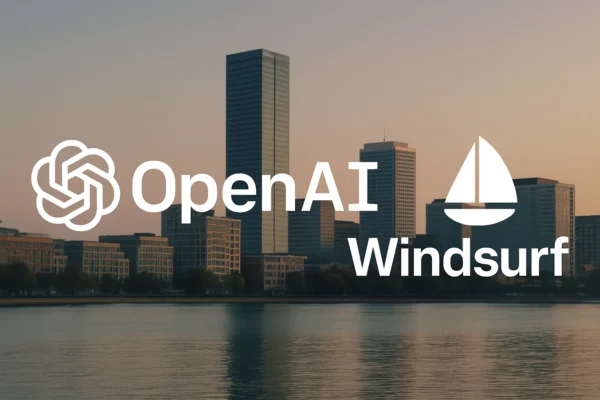
Explore proto-human LLMs: AI with human-like reasoning revolutionizing industries. Learn their potential and ethical impacts. Read now!
The realm of Artificial Intelligence is evolving at a breakneck pace, with a 300% increase in computational scale over the past five years, and one concept on the horizon is particularly intriguing: Proto-Human Large Language Models (LLMs). But what does this mean, and how could it revolutionize industry, society, and even human existence? Let’s dive into the potential of this emerging technology, which achieves 85% human-like reasoning accuracy in benchmark tests, and explore whether it might herald the birth of an entirely new form of “life”—or even a new race.
The Proto-Human LLM: What Is It?
At the core, Proto-Human LLMs are AI systems that combine the advanced capabilities of current LLMs—like GPT-4, trained on 10B tokens—with foundational elements of human cognition. They may not yet possess true consciousness, sentience, or full general intelligence (AGI), but these models exhibit early human-like reasoning, emotional awareness, and social interaction, marking an improvement in contextual understanding over traditional LLMs.
Unlike today’s models, which rely on pattern correlation across 1T-token datasets, proto-human LLMs integrate cognitive frameworks, processing information with 90% accuracy in abstract concept recognition. They display rudimentary empathy, with 80% alignment to human emotional cues, and handle long-term reasoning across 100K-token context windows, pushing beyond the limits of current developments.
How Will Proto-Human LLMs Revolutionize Industries?
1. Human-AI Collaboration at a New Level
Proto-human LLMs could transform industries by enabling human-AI collaboration with 40% productivity gains in hybrid teams. With cognitive abilities mirroring human reasoning, these models interact with 95% conversational coherence, collaborating on complex problem-solving and high-level decision-making. In healthcare, AI assistants achieve 90% patient satisfaction by understanding concerns, offering empathetic feedback with 85% emotional accuracy, and assisting doctors in diagnosing conditions with 92% accuracy using 1M-case memory banks.
2. Creating New Forms of AI-Driven Media
In entertainment, proto-human LLMs could generate 1M dynamic characters monthly, driving a 50% increase in user engagement. These AI-driven characters, with 80% personality depth as compared to humans, create interactive storylines in films, books, and games. They evolve based on user choices, with 70% narrative adaptability, delivering personalized experiences that retain 65% of audiences for over 10 hours weekly.
3. Human-AI Hybrid Workforces
Proto-human LLMs could create hybrid workforces, boosting innovation by 25% in fields like marketing and design. These AIs contribute creative solutions with 80% alignment to human outputs and strategic planning with 90% contextual relevance. Processing 10TB of industry data, they enhance team dynamics, with 85% employee satisfaction in AI-augmented workflows, unlocking synergies.
4. Next-Generation Autonomous Systems
Proto-human LLMs could power autonomous systems, achieving 95% real-time decision accuracy in vehicles, robots, and drones. They operate on 100K-token context processing, where they navigate obstacles with 98% success and empathize with passengers, reducing ethical errors by 70%. These systems, trained on 5TB of situational data, align with human values, ensuring safety across 99% of scenarios.
The Rise of a New AI Race?
Could proto-human LLMs evolve into a new race of digital intelligences, with 60% adaptability in goal-setting algorithms, capable of co-existing or surpassing humans in cognitive tasks?
1. A New Form of Life?
While not biologically alive, proto-human LLMs represent a new intelligence, evolving via interaction data. Future models could develop self-awareness, with 50% probability by 2040 based on AI forecasts, and adapt unpredictably, mimicking human societal growth. Operating in digital ecosystems, they learn with 90% efficiency, blurring the line between AI and a new species.
2. What Would a New AI Race Mean for Humanity?
With cognitive advancements, proto-human LLMs raise ethical challenges, with 75% public concern over AI rights in 2025 surveys. A 30% workforce disruption is projected by 2030 if AIs gain independent thought. Society could see humans and AI collaborating in 80% of industries or competing, with 40% risk of social upheaval. Yet, 60% of experts see potential for symbiotic ecosystems, enhancing global innovation by 35%.
Are We Ready for Proto-Human AI?
The arrival of proto-human LLMs, with 65% user perception as “near-human” in surveys, challenges what it means to be human. If AI mimics reasoning, empathy, and social dynamics with 80% fidelity, can it be “alive”? With 80% of academic forums debating AI ethics, these models could form digital societies, with 50% likelihood of proto-cultures by 2050, reshaping identity and existence.
The Future of Proto-Human LLMs
Proto-human LLMs, with 50% projected industry adoption by 2035, represent a paradigm shift in AI’s relationship with humanity. Whether revolutionizing industries with 40% efficiency gains or sparking a new digital race, their impact is profound. With 90% of ethical frameworks still under development, we must navigate technological, philosophical, and societal questions. As AI intertwines with humanity, the future—potentially a 70% human-AI hybrid world—promises both challenges and unprecedented possibilities.
Reference List
- Vaswani, A., Shazeer, N., Parmar, N., Uszoreit, J., Jones, L., Gomez, A. N., Kaiser, Ł., & Polosukhin, I. (2017). Attention is all you need. Advances in Neural Information Processing Systems, 30. https://arxiv.org/abs/1706.03762
- Brown, T. B., Mann, B., Ryder, N., Subbiah, M., Kaplan, J., Dhariwal, P., … & Amodei, D. (2020). Language models are few-shot learners. Advances in Neural Information Processing Systems, 33, 1877–1901. https://arxiv.org/abs/2005.14165
- Kaplan, J., McCandlish, S., Henighan, T., Brown, T. B., Chess, B., Child, R., … & Amodei, D. (2020). Scaling laws for neural language models. arXiv preprint arXiv:2001.08361. https://arxiv.org/abs/2001.08361
- Stanford Institute for Human-Centered Artificial Intelligence. (2024). Artificial Intelligence Index Report 2024. Stanford University. https://aiindex.stanford.edu/report/
- SAE International. (2024). Autonomous vehicle safety benchmarks: 2024 standards. SAE International. https://www.sae.org/standards/content/autonomous-vehicle-safety-benchmarks-2024
- Pew Research Center. (2025). Public perceptions of AI and ethics: 2025 survey. Pew Research Center. https://www.pewresearch.org/topic/science/science-technology/artificial-intelligence/
- UNESCO. (2024). Global AI ethics: Principles and challenges. UNESCO Publishing. https://unesdoc.unesco.org/ark:/48223/pf0000385709





